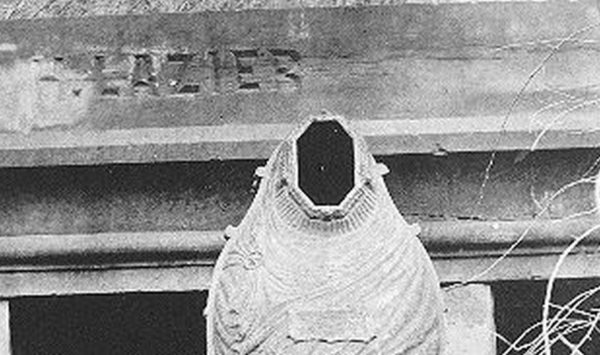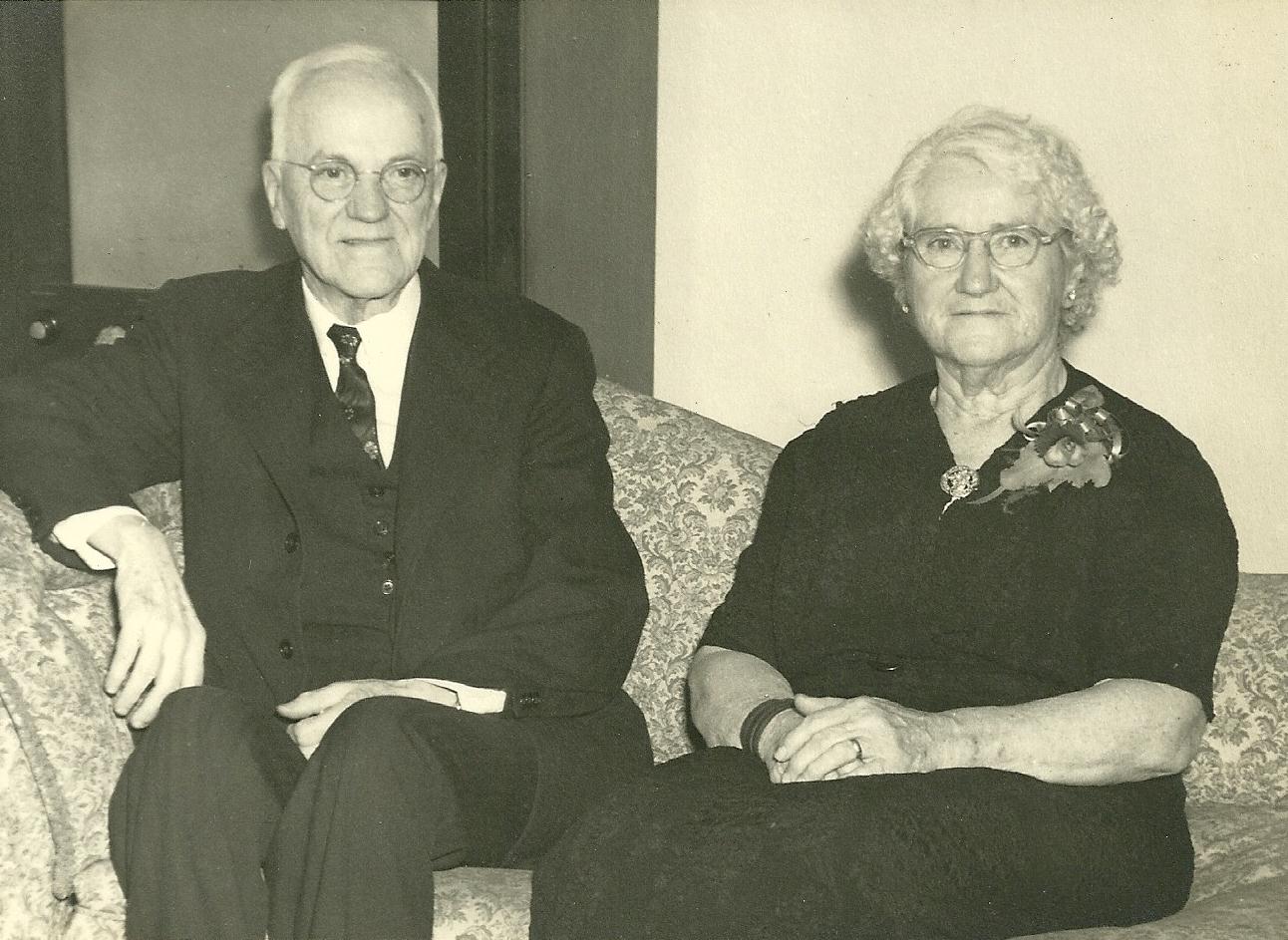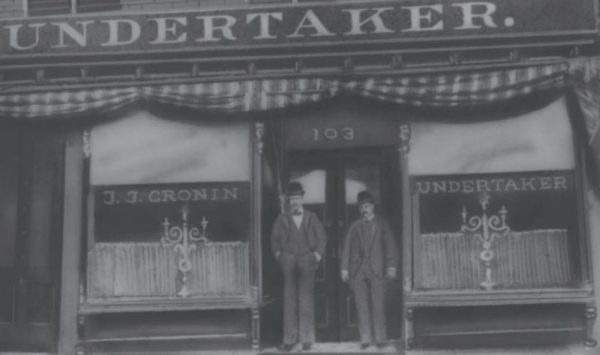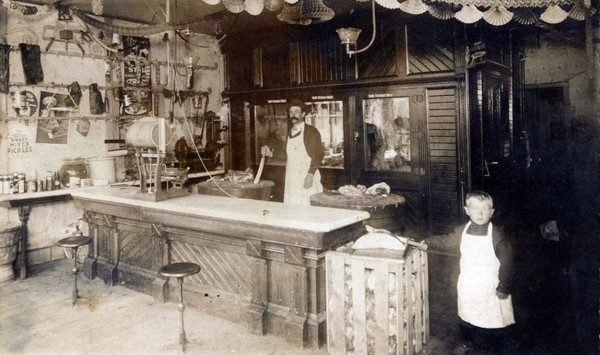BURY ME DEEP, IN A METALLIC CASE (1852)

******************************************************************************************************************************** Brownstone Detectives investigates the history of our clients’ homes. The story you are about to read was composed from research conducted in the course of one of those investigations. Do you know the history of YOUR house? ******************************************************************************************************************************** Beware BODY SNATCHERS! Beware GRAVE ROBBERS! BEHOLD, the Fisk Metallic Burial Case! F.A. MORREL, UNDERTAKER AND DISTRIBUTOR, 57 MYRTLE In 1852, a Brooklyn Heights “sexton and general undertaker” by the name of F. A. Morrel, practicing at his “coffin-wareroom” at No. 57 Myrtle Avenue, was promoting to the Brooklyn public the latest design in funerary offerings – the Fisk Metallic Burial Case. Originally designed as a vessel that would keep a dead body from decomposing if the individual had died far from home, the Fisk Metallic Burial Case would soon “take on a new life,” so to speak, for those who wanted their nearby loved ones to keep from rapidly decomposing, as well. For this reason, many Fisk ads promoted their cases for the general preservation of the body – which was important to those whose burial case included a “viewing plate,” allowing for the living relatives to view the departed one’s face. “From a coffin of this description the air may be exhausted so completely as entirely to prevent the decay of the contained body on principles well understood,” noted Fisk’s patent, “or, if preferred, the coffin may be filled with any gas or fluid having the property of preventing putrefaction.” Another of the selling points of these cast iron […]
FOOLING THE UNDERTAKER, PT. II (1900)

(Continued from Part I of Fooling The Undertaker) The first time that Park returned to Ralph Avenue for his Miss Twaddle, the watchful Twaddle boys were there to meet him. They refused to allow Miss Twaddle to see Park, and so he returned home both frustrated and empty-handed. Park knew he would have to find a way to outsmart the Twaddle boys. None of them was married, and so it was clear to him that they didn’t understand true love. Hardcastle, the undertaker (and Park’s former boss), was another obstacle to overcome – he, too, had never married. And while Park was sure of Hardcastle’s eagle’s eye, he was just as certain that Hardcastle’s hearing had not been cured a few years ago by Dr. Copeland’s quack patent medicine. So, when Park returned the second time in late May of 1900, he had already planned their escape, guiding Miss Twaddle’s actions and informing her where to meet him. Miss Twaddle would tiptoe down the stairwell, being exceedingly quiet. When she reached the door, she would walk in the opposite direction of Hardcastle’s parlor and down Macon Street toward Saratoga Square. On this second visit, Park was successful. Meeting up with Miss Twaddle, he spirited her away with him – and away from her life on Ralph Avenue. The two had “eloped” in grand fashion, making their way to a church far enough away from Ralph Avenue that they could marry without interference – which they did – that day. Afterwards, […]
FOOLING THE UNDERTAKER (1900)

Among the many thriving shops that lined busy Ralph Avenue at the turn of the century was a single story storefront at 159 Ralph Avenue. Just up from Macon Street, it stood amongst the avenue’s tailors, bakers, butchers, paper-hangers, plumbers, and pharmacies, dealing in bereavement and mourning. Hardcastle Brothers Undertakers had been in the neighborhood for almost as long as there had been a neighborhood. When a local resident died, it was usually Robert K. Hardcastle’s business to have them removed to his undertaking salon where he would prepare them for their wake and subsequent burial. Hardcastle was of Scotch-Irish descent – a bit bull-headed, very stubborn, and quite recently deaf. But he was a respected member of the community for the role he played in it, and the work he did for the families here. Hardcastle prepared and buried a good number of the people who died on Macon Street and the surrounding streets at the time. His business was steady, as people were constantly dying, so, other than a bit of advertising he did a few years ago for Dr. Copeland’s patented Hearing Treatment – he had little need to advertise his own undertaking services. It was all word-of-mouth. In 1900, though, a small piece of newspaper fluff about an employee of Hardcastle’s brought some unwanted advertising to Hardcastle and his salon. THE MORTUARIST’S SHOPKEEPER In Hardcastle’s employ was a man by the name of Henry C. Park. Park was Hardcastle’s shopkeeper. In addition to helping Hardcastle with ordering and […]
BUTCHER, BAKER, UNDERTAKER (1895)

******************************************************************************************************************************** Brownstone Detectives investigates the history of our clients’ homes. The story you are about to read was composed from research conducted in the course of one of those investigations. Do you know the history of YOUR house? ******************************************************************************************************************************** As the sleeping giant that is Bedford-Stuyvesant’s Ralph Avenue begins to awaken from its slumber, it is tempting to take a look back at some of the businesses that once lined this bustling thoroughfare. STUYVESANT EAST OF YORE The eastern section of Stuyvesant was alive with industry in the late part of the 19th and the early part of the 20th centuries. As houses had recently been built along the main streets, stores, schools, and churches had gone up along the avenues and on corners, dotting the landscape with their offerings. The neighborhood, after its initial build-up in the 1890s, became completely self-sufficient in terms of goods and services. Residents of Macon Street, like those from the other streets in the neighborhood, found themselves surrounded by a variety of offerings that would allow them – and their servants, in some cases – to satisfy the needs of their families easily and quickly. THE BUSTLING BUSINESS CORRIDOR THAT WAS RALPH AVENUE Starting in the late 19th century, Ralph Avenue became a busy local business corridor filled with a wide variety of shops and stores that suburban families needed to support households of consumers. Since its inception, the avenue had public transportation, in the way of horse-drawn omnibuses and then later a streetcar […]